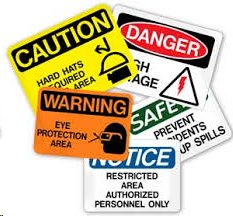OSHA Cites Antero Contractor After West Virginia Worker’s Death
From an Article by Jamison Cocklin, Natural Gas Intelligence, June 2, 2015
The U.S. Occupational Safety and Health Administration (OSHA) has cited a contractor that worked at an Antero Resources Corp. well site in Tyler County, WV, where a worker was killed last year when he was struck by a front-end loader.
Based in Calgary, Alberta, Canada, Precision Drilling LP was cited for failure to provide a workplace “free from recognized hazards,” according to OSHA. The agency discovered the violations during an investigation after Ryan Dunn, 29, of Jackson County, WV was killed on site in November. The agency said Dunn was “struck by or caught between hazard from a front-end loader” as it was moving pipe, equipment and other supplies.
It was discovered that the equipment was being operated with “restricted rear visibility” in reverse and lacked a left-side rear-view mirror. In addition to that citation, OSHA also found that Precision failed to provide fall protection on site with an unguarded hole near a mud tank. The company was also cited for failing to provide or require its workers to wear respirators near the mud tank.
OSHA issued the citations in mid-May and proposed a penalty of $13,550. Precision was given an opportunity to contest the violations by the end of the month, but it is unclear whether they did. The company has not commented about the incident or OSHA’s findings.
West Virginia Gov. Earl Ray Tomblin is soon expected to issue an executive order detailing requirements for a study to ensure better safety at oil and gas drilling sites after an increase in fatal accidents over the last decade with the rise in unconventional drilling in the state.
>>>>>>>>>>>>>
OSHA Issues Alert on Non-Silica Fracking Hazards
Submitted by Jackson Lewis P.C., National Law Review, January 29, 2015
OSHA has issued an advisory on non-silica health and safety hazards in the hydraulic fracking industry.
OSHA said the purpose of its 41-page document, Hydraulic Fracturing and Flowback Hazards Other than Respirable Silica, is to inform employers and workers about the known hazards that result from hydraulic fracturing and flowback and to offer ways to reduce exposure to these hazards. It leaves discussion of silica-related hazards to publications previously released, including a joint OSHA-NIOSH hazard alert and an OSHA “infosheet.”
The agency makes clear the document does not impose additional legal or compliance obligations on employers beyond existing OSHA standards, regulations, and OSH Act’s general duty clause.
“Fracking” is a process that blasts through underground formations to release oil and natural gas. Flowback, the flow of fluids and hydrocarbons back out of the formations fractured by chemical- and sand-containing fluids, is part of the process. According to OSHA, some 35,000 wells are hydraulically fractured in the United States every year. Fracking is classified as a subsector of the oil and gas extraction industry. The industry experiences a higher fatality rate than most of U.S. general industry; however, no information is publicly available on worker injuries, illnesses, or fatalities connected specifically with fracking or flowback operations.
The OSHA publication, considered a guidance document by the agency, breaks down the fracking operation into three other hazard areas in addition to flowback: (1) transport, rig-up, and rig-down; (2) mixing and injection; and (3) pressure pumping. Each section of the publication on hazard areas includes a comprehensive set of hazard- reduction recommendations.
For instance, the flowback section explains that fluids and materials flowing back at very high pressures from the well may contain debris such as rocks and mud, plugs and other parts, toxic chemicals, oil, water, and sand. A variety of prevention strategies to deal with these pressures and with potentially flammable atmospheres are listed. A separate section suggests ways to prevent exposure to hydrogen sulfide and volatile organic chemicals. A lengthy matrix in an appendix breaks down the job of hydraulic fracking into its multiple steps with their associated hazards.
In an introductory section, OSHA offers pre-job planning advice that includes giving workers stop-work authority if unsafe conditions or practices exist. The agency also advises that “before beginning work, personnel should receive instruction in hazard recognition and safe work practices to reduce the chance of injury on the job site.” OSHA urges employers to develop injury and illness prevention programs.
Finally, a section is dedicated to worker rights, including the right to report injuries or raise safety and health concerns, along with a statement that employees have recourse to OSHA in the event of retaliation.
The full report is entitled “Hydraulic Fracturing and Flowback Hazards Other than Respirable Silica,” U.S. Department of Labor, Occupational Safety and Health Administration, OSHA 3763-12 2014.
See also the following OSHA reports on “silica sand” exposures to workers:
Silica: Silica Exposure during Hydraulic Fracturing InfoSheet, (OSHA 3622 – 2012) (English: PDF)
Silica: OSHA/NIOSH Hazard Alert – Worker Exposure to Silica during Hydraulic Fracturing, OSHA 3566 – 2012) (English: HTML PDF )
See also: www.FrackCheckWV.net


{ 2 comments… read them below or add one }
The guy was crushed to death and the “proposed” penalty was $13,550. If a soldier was killed in WWII his family received $10,000 “insurance.” That is worth $131,443.89 in today’s money, for comparison.
Don’t you love that “proposed” penalty thing! Corporations get to haggle penalties, but real people don’t (at least at the level of the author and most of the readers). One more reason why corporations aren’t real people!
http://osha10hrtraining.com